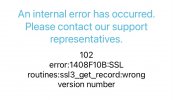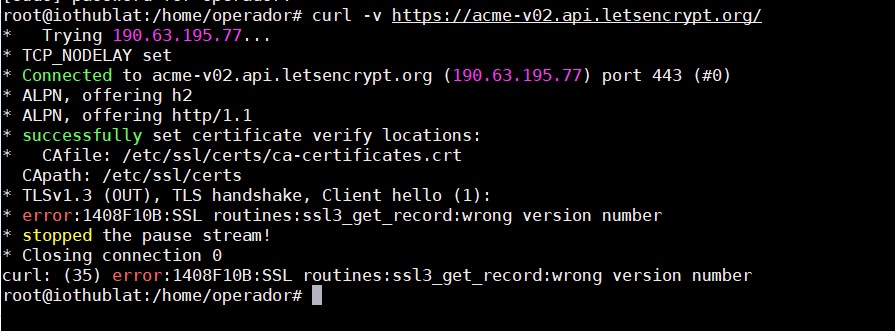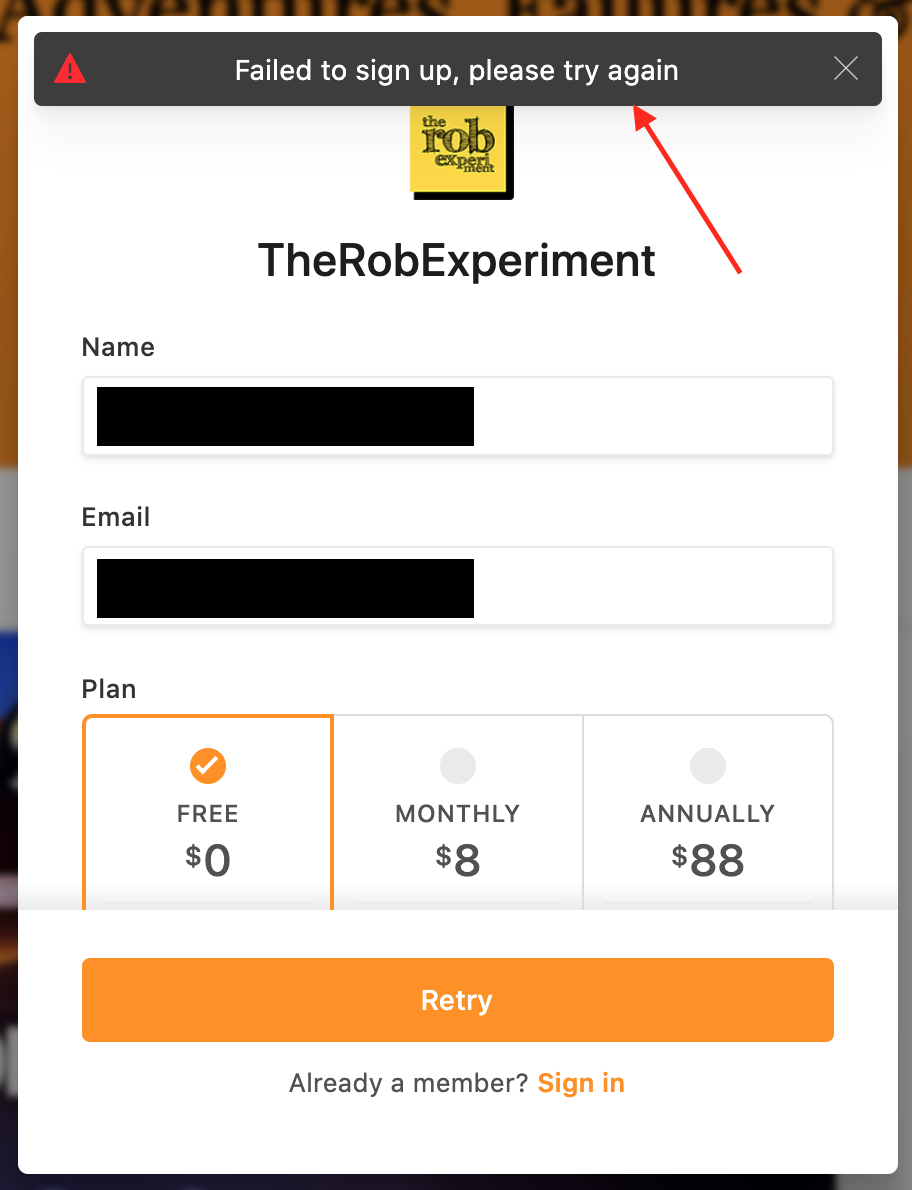Rror:1408F10B:Ssl Routines:Ssl3_Get_Record:Wrong Version Number
In the world of online security, SSL (Secure Sockets Layer) and its successor TLS (Transport Layer Security) are crucial protocols that enable secure communication between clients and servers. These protocols establish an encrypted link between the two parties, ensuring that the data transmitted remains confidential and unaffected by potential threats.
SSL/TLS protocols work through a combination of asymmetric and symmetric encryption. Asymmetric encryption is used in the initial handshake process, where the client and server agree on a shared secret key. This key is then used for symmetric encryption, ensuring secure and efficient data transfer.
II. SSL3 and its role in secure communication
SSL3 (SSL version 3) is one of the earlier versions of the SSL protocol. While it has been succeeded by TLS, SSL3 is still in use today, albeit to a lesser extent. It is important to note that SSL3 has known vulnerabilities and has been largely deprecated. However, certain legacy systems and devices continue to rely on SSL3 for secure communication.
SSL3 plays a crucial role in secure communication by providing the foundation for establishing a secure connection. It handles the initial handshake process, where the client and server negotiate the parameters for encryption and authentication. Once the handshake is complete, SSL3 ensures that all data transmitted is encrypted and protected from potential threats.
III. Explaining SSL routines and their significance in SSL/TLS handshake
SSL routines refer to the functions or procedures within the SSL/TLS protocol that perform specific tasks during the handshake process. These routines are responsible for establishing the encrypted connection, verifying the authenticity of the server, and negotiating the encryption algorithms and parameters.
During the SSL/TLS handshake, the client and server exchange a series of messages to authenticate each other and establish the secure connection. The SSL routines are responsible for carrying out the necessary cryptographic operations, such as generating and validating digital certificates, performing key exchanges, and ensuring the integrity and confidentiality of the data.
IV. Causes of the “wrong version number” error in SSL/TLS connections
The “wrong version number” error in SSL/TLS connections can occur due to several reasons. Some of the common causes include:
1. Protocol mismatch: The client and server may be attempting to establish a connection using different versions of the SSL/TLS protocols. For example, if the client supports TLS 1.2 while the server only supports SSL3, the “wrong version number” error may occur.
2. Misconfigured SSL/TLS settings: Incorrect configurations of SSL/TLS settings on either the client or server side can lead to the “wrong version number” error. This can include disabled encryption algorithms, unsupported cipher suites, or incompatible SSL/TLS protocol versions.
3. Outdated software: If either the client or server is running outdated SSL/TLS software versions, it may not support the required protocol version. Updating the software to the latest version can help resolve the error.
4. Firewall or proxy issues: Firewalls or proxies between the client and server can interfere with SSL/TLS handshake, leading to errors such as the “wrong version number.” Certain network configurations or settings may need to be adjusted to allow proper SSL/TLS communication.
V. Troubleshooting the “wrong version number” error in SSL/TLS connections
When encountering the “wrong version number” error in SSL/TLS connections, it is essential to follow a systematic troubleshooting approach. Here are some steps to help diagnose and resolve the issue:
1. Verify SSL/TLS protocol versions: Ensure that the client and server are both configured to use compatible SSL/TLS protocol versions. This may involve checking the settings in the software or adjusting configurations on the server.
2. Update SSL/TLS software: If either the client or server is running outdated software versions, update them to the latest release. This can address any compatibility issues and ensure support for the required protocol versions.
3. Check SSL/TLS settings: Review the SSL/TLS settings on both the client and server side. Make sure that the proper encryption algorithms, cipher suites, and protocols are enabled and supported by both parties.
4. Test the connection from different locations: If the error persists, try connecting to the server from a different network or location. This can help identify if the issue is specific to the network configuration or firewall/proxy settings.
5. Verify firewall or proxy configurations: Ensure that any firewalls or proxies between the client and server are not blocking or interfering with the SSL/TLS handshake process. Adjust firewall rules or proxy settings as necessary.
VI. Steps to resolve the “wrong version number” error in SSL/TLS connections
1. Update SSL/TLS software: Ensure that both the client and server are running the latest versions of the SSL/TLS software. This helps ensure compatibility with the required protocol versions.
2. Adjust SSL/TLS settings: Check the SSL/TLS settings on both the client and server side. Enable the appropriate protocol versions (e.g., TLS 1.2) and ensure that the necessary encryption algorithms and cipher suites are supported.
3. Restart the server: A simple restart of the server can sometimes resolve issues related to SSL/TLS connections. This allows the server to reload the SSL/TLS settings and establish a fresh connection.
4. Verify network configurations: Ensure that the network configurations, such as firewalls and proxies, are not causing any interference with the SSL/TLS handshake process. Adjust the configurations or consult with network administrators if needed.
5. Use an SSL/TLS testing tool: Utilize tools such as OpenSSL or online SSL/TLS testing utilities to diagnose and troubleshoot SSL/TLS connections. These tools can provide detailed information about the handshake process and potential issues.
VII. Preventive measures to avoid the “wrong version number” error in SSL/TLS connections
To avoid encountering the “wrong version number” error in SSL/TLS connections, consider implementing the following preventive measures:
1. Regularly update SSL/TLS software: Keep the SSL/TLS software up to date on both the client and server side. This ensures that the latest security patches and protocol versions are supported.
2. Implement strong SSL/TLS configurations: Follow industry best practices when configuring SSL/TLS settings. Enable strong encryption algorithms, disable outdated or weak cipher suites, and prioritize the use of secure protocol versions.
3. Perform regular security audits: Conduct periodic security audits to evaluate the effectiveness of SSL/TLS configurations. This helps identify potential vulnerabilities or misconfigurations that could lead to errors like “wrong version number.”
4. Monitor SSL/TLS connections: Implement monitoring and logging mechanisms to track SSL/TLS connections. This allows for quick identification and resolution of any issues that may arise, including the “wrong version number” error.
5. Stay informed about SSL/TLS developments: Stay updated with the latest developments and vulnerabilities in the SSL/TLS protocols. Regularly review security advisories and apply necessary patches or updates to avoid potential issues.
In conclusion, the “wrong version number” error in SSL/TLS connections can be frustrating for users and administrators alike. Understanding the SSL/TLS protocols, the role of SSL3, and the significance of SSL routines can help diagnose and troubleshoot this error effectively. By following the provided troubleshooting steps and implementing preventive measures, the error can be resolved and secure communication can be ensured.
Ssl Error: Wrong Version Number
Keywords searched by users: rror:1408f10b:ssl routines:ssl3_get_record:wrong version number Wrong version number ssl, Routines ssl3_get_record wrong version number ssl record ssl3_record c 332, ssl_do_handshake() failed (ssl: error:1408f10b:ssl routines:ssl3_get_record:wrong version number), SSL routines ssl3_get_record wrong version number deps openssl openssl ssl record ssl3_record c 332, Wrong version number nodemailer, ssl routines:ssl3_get_record:wrong version number:…/ssl/record/ssl3_record c 332, ssl wrong version number, wget ssl3_get_record:wrong version number
Categories: Top 13 Rror:1408F10B:Ssl Routines:Ssl3_Get_Record:Wrong Version Number
See more here: nhanvietluanvan.com
Wrong Version Number Ssl
Introduction
Secure Socket Layer (SSL) technology plays a crucial role in protecting data transmitted over the internet by establishing an encrypted connection between a user’s device and a web server. However, encountering the error message “wrong version number SSL” can be frustrating, as it indicates a failure in establishing a secure connection. In this article, we will explore the common causes behind this error, its potential implications, and address some frequently asked questions (FAQs) related to resolving it.
Understanding the “Wrong Version Number SSL” Error
The “Wrong Version Number SSL” error message is typically encountered when clients and servers initiate a connection using different SSL/TLS versions. SSL/TLS versions act as protocols that facilitate secure communication between network devices. When the client and server fail to agree upon a common SSL/TLS version during the handshake process, the “wrong version number SSL” error occurs.
Causes of the “Wrong Version Number SSL” Error
1. Obsolete SSL/TLS versions: The use of outdated SSL/TLS versions, such as SSLv2 or SSLv3, can trigger this error. These outdated versions are known to have security vulnerabilities, and modern web servers often disable them by default.
2. Configuration mismatch: In some cases, the client and server may have different SSL/TLS configuration settings. For instance, if the client attempts to use a specific cipher suite or encryption algorithm that is not supported by the server, the “wrong version number SSL” error may arise.
3. Proxy server issues: Proxy servers can sometimes interfere with SSL/TLS handshakes, leading to version incompatibility. Misconfigured or outdated proxy servers may cause the error to occur.
4. Network connectivity problems: Network disruptions, such as packet drops or firewall restrictions, can interfere with the SSL/TLS handshake process. This interference may cause version mismatches and result in the “wrong version number SSL” error.
Implications of the “Wrong Version Number SSL” Error
1. Inability to establish a secure connection: The primary consequence of encountering this error is the failure to establish a secure connection between the client and server. Without a secure connection, sensitive data transmitted between the two parties can be vulnerable to eavesdropping and unauthorized access.
2. Restricted access to websites/services: Websites and services that require SSL/TLS encryption may restrict access to users encountering the “wrong version number SSL” error, preventing them from accessing the desired content.
Frequently Asked Questions (FAQs)
Q1: How can I diagnose the cause of the “wrong version number SSL” error?
A1: Start by checking your web browser settings to ensure SSL/TLS protocols are enabled correctly. Additionally, verify that your internet connectivity is stable and that no firewall or network restrictions are blocking the SSL/TLS handshake. If the error persists, consult with your system administrator or contact the website’s support team for further assistance.
Q2: Can clearing browser cache resolve this error?
A2: In some cases, clearing the browser cache can resolve temporary issues linked to SSL/TLS handshake failures. However, it is recommended to clear cache only after ensuring that the error is not caused by other factors, such as outdated SSL/TLS versions or misconfigured settings.
Q3: How can I update my SSL/TLS version?
A3: Updating SSL/TLS versions depends on the software or device being used. For web browsers, consider updating to the latest version available. For web servers, consult documentation specific to the server software you are using. It is crucial to ensure compatibility with the server and any other software dependent on SSL/TLS connections.
Q4: What should I do if a website I need to access restricts access due to the “wrong version number SSL” error?
A4: If you encounter restricted access, you can try accessing the website from a different web browser or device. Alternatively, contact the website administrator or support team to report the issue and inquire about any potential solutions or workarounds.
In conclusion, encountering the “wrong version number SSL” error can be frustrating, hindering secure communication between clients and servers. Understanding the causes behind this error and implementing appropriate resolutions is crucial for maintaining secure online transactions. If you’re experiencing persistent issues, seek professional assistance to ensure the proper configuration and compatibility of SSL/TLS settings.
Routines Ssl3_Get_Record Wrong Version Number Ssl Record Ssl3_Record C 332
In the world of internet security, the SSL/TLS protocols play a vital role in ensuring the confidentiality and integrity of data transmitted over the network. However, like any technology, they are not without their flaws. One such issue that often arises is the “Routines ssl3_get_record wrong version number ssl record ssl3_record c 332” error. In this article, we will explore the details of this error, its causes, and potential solutions, to help users understand and resolve this issue effectively.
The “Routines ssl3_get_record wrong version number ssl record ssl3_record c 332” error typically occurs when there is a mismatch in the SSL/TLS protocol version used by the client and the server. When a client attempts to establish a secure connection with a server, they negotiate the version of the SSL/TLS protocol to use during the handshake process. However, if the client’s chosen version does not match the server’s supported versions, this error may be triggered.
There can be several factors behind this error. Firstly, it is possible that the server is configured to only support specific SSL/TLS protocol versions, and the client is attempting to connect using an unsupported version. Secondly, outdated or incompatible software versions on either the client or server side may lead to version mismatches. Additionally, network issues, such as proxies or firewalls, may interfere with the SSL/TLS handshake process and result in this error.
To resolve the “Routines ssl3_get_record wrong version number ssl record ssl3_record c 332” error, several potential solutions can be explored:
1. Update the software: Ensure that both the client and server software versions are up-to-date. SSL/TLS protocol support may differ between older and newer versions, and updating can resolve compatibility issues.
2. Check protocol configurations: Review the SSL/TLS protocol configurations on the server side and ensure that they are compatible with the client’s supported versions. Adjusting these settings can help establish a successful connection.
3. Disable outdated versions: If possible, disable outdated SSL/TLS protocol versions on the server. This ensures that only the most secure and up-to-date versions are in use.
4. Verify network configurations: Review network configurations, such as proxies or firewalls, that may affect the SSL/TLS handshake. Ensure that these configurations are not interfering with the handshake process.
5. Consult server logs: Examine the server logs to gain insights into the error. The logs may provide detailed information about the cause, facilitating more focused troubleshooting.
FAQs:
Q: What causes the “Routines ssl3_get_record wrong version number ssl record ssl3_record c 332” error?
A: The error is primarily caused by a mismatch in the SSL/TLS protocol versions used by the client and server. Other factors that contribute to this error include outdated or incompatible software versions and network issues.
Q: How can I resolve this error?
A: Updating the client and server software, adjusting protocol configurations, disabling outdated versions, verifying network configurations, and consulting server logs are potential solutions to this error.
Q: Can the SSL/TLS protocol versions be adjusted on the client-side to resolve the error?
A: While adjusting protocol configurations on the client-side can be attempted, it is usually more effective to review and adjust the server-side configurations, as the server controls the supported SSL/TLS protocol versions.
Q: Are there any security concerns associated with the “Routines ssl3_get_record wrong version number ssl record ssl3_record c 332” error?
A: In general, this error does not pose a direct security risk. However, it can prevent the establishment of a secure connection, which may result in the transmission of data over an unencrypted channel, potentially compromising its confidentiality and integrity.
Q: What should I do if I am encountering this error while browsing websites?
A: If you encounter this error while accessing a specific website, it is recommended to reach out to the website’s administrator or technical support for assistance. They will be able to address the issue on their server-side and ensure a secure connection can be established.
In conclusion, the “Routines ssl3_get_record wrong version number ssl record ssl3_record c 332” error can be frustrating, but understanding its causes and implementing the suggested solutions can help overcome this issue. By keeping client and server software up-to-date, adjusting protocol configurations, and verifying network settings, users can establish secure connections and enhance their overall online security.
Images related to the topic rror:1408f10b:ssl routines:ssl3_get_record:wrong version number

Found 42 images related to rror:1408f10b:ssl routines:ssl3_get_record:wrong version number theme




![Solved suddenly] Mail fails to send after a new installation: error: ` 1408F10B:SSL routines:ssl3_get_record:wrong` - Developer help - Ghost Forum Solved Suddenly] Mail Fails To Send After A New Installation: Error: ` 1408F10B:Ssl Routines:Ssl3_Get_Record:Wrong` - Developer Help - Ghost Forum](https://global.discourse-cdn.com/business4/uploads/ghost2/original/3X/9/a/9a301950c3edd023922656d99f1116a3fd24c8e3.jpeg)















![Solved] mod_openssl.c ssl3_get_record:wrong version number; tls_early_post_process_client_hello:version too low - Lighttpd - lighty labs Solved] Mod_Openssl.C Ssl3_Get_Record:Wrong Version Number; Tls_Early_Post_Process_Client_Hello:Version Too Low - Lighttpd - Lighty Labs](https://redmine.lighttpd.net/attachments/download/2201/Cloudflare-3.png)




















Article link: rror:1408f10b:ssl routines:ssl3_get_record:wrong version number.
Learn more about the topic rror:1408f10b:ssl routines:ssl3_get_record:wrong version number.
- curl: (35) error:1408F10B:SSL routines:ssl3_get_record:wrong …
- Error:1408f10b:ssl routines:ssl3_get_record:wrong … – Bobcares
- SSL error: Wrong version number – Super User
- Error:1408F10B:Ssl Routines:Ssl3_Get_Record:Wrong …
- Unable to establish SSL connection: wrong version number
- error:1408F10B:SSL routines:ssl3_get_record:wrong … – Plesk
- curl: (35) error:1408F10B:SSL routines:ssl3_get_record:wrong …
- Error:1408f10b:ssl routines:ssl3_get_record:wrong version …
See more: https://nhanvietluanvan.com/luat-hoc/